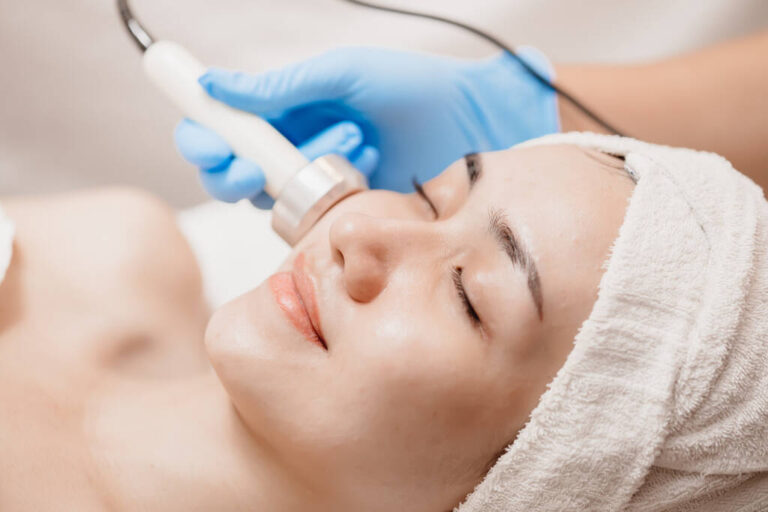
Glaucoma is one of those sneaky eye conditions that can quietly steal your sight without much warning. It occurs when there is a rise in pressure inside the eye that further damages the optic nerve. And once the damage is done, it is permanent, adding all the more important reasons to stay ahead of it. But with so many treatments available today, which ones really do work best in protecting your vision? This is all about the balance between slowing the disease with treatments and making lifestyle modifications to maintain eye health.
Let’s jump into some of the best ways to manage glaucoma and protect your sight.
Medications: First Line of Defense
If you’ve just been diagnosed with glaucoma, chances are your doctor is going to start you on eye drops. But here’s the catch: not all drops are created equal. Some work to reduce the amount of fluid your eye produces, while others help increase the draining of fluid to lower pressure inside the eye. The aim of such medication is to decrease intraocular pressure (IOP) enough to avoid damage to the optic nerve and preserve vision.
Another popular option is prostaglandins, and these mostly have to be taken once a day. They can be very effective but may have some side effects like eye redness or discomfort. Then, there is the slowing of fluid production by beta-blockers, and carbonic anhydrase inhibitors reduce the pressure similarly. When ordinary eye drops don’t work, newer meds like Rhopressa and Rocklatan exploit different pathways in the eye to drain fluid and provide other modes of action. These newer options also offer more flexibility for patients and may help those who haven’t responded well to traditional treatments.
But the kicker is that all these medications have to be taken consistently for them to work right. If you’re someone who tends to forget a dose here and there, you really ought to discuss with your doctor what works best for you. The biggest challenge with managing glaucoma is compliance with medication because it’s too common for forgotten doses to lead to a quick increase in eye pressure and further optic nerve damage.
Laser Therapy: Less Invasive Alternative
What if you are the kind of person who wants to avoid putting drops in your eyes every day? That’s where laser therapy comes in. It is not as dramatic as it sounds; it is relatively simple and doesn’t even require admission to the hospital. For many, it’s a good compromise between medications and surgery—a long-term solution with no concern about having to use eye drops every day.
Selective Laser Trabeculoplasty is one of the common options. It applies the principle of laser energy to enhance the facility of drainage while proportionately reducing the pressure in the eyes. It is called “selective” because it only affects the targeted tissue and spares the rest. Think of it as precision laser surgery—without the drama. SLT has proved to be particularly effective as an initial treatment or alternative for people who cannot tolerate medications and can often delay more invasive treatments.
SLT is great for patients who cannot tolerate drops or who wish to reduce their need for these. This is a non-invasive procedure, so the recovery is pretty fast, and it’s a good option to consider for people looking forward to less invasive procedures. Many patients start to notice an improvement within a few weeks, and in many cases, it can be effective for several years. Remember, though, that the SLT might need to be repeated after some time since it may lose its effectiveness.
Surgery: For When Things Get Serious
But what if medications aren’t enough, or laser therapy doesn’t work? Then, you may have to consider surgery. Often, this is the last option when other modes of treatment don’t work, but modern surgical approaches have improved dramatically over the years.
The whole purpose of glaucoma surgery is to provide new pathways for fluid to drain from the eye, resulting in reduced pressure. There is trabeculectomy, in which the surgeon creates a small flap within the eye to drain excess fluid. Then there’s the option of drainage tubes, inserted into the eye to maintain proper fluid circulation. Both work very effectively in lowering IOP and may be long-term solutions for patients with severe glaucoma. However, surgery may carry certain risks, such as infection or scarring, and is usually recommended only when other treatments have failed.
If you’re looking for something more modern and less risky, there is Minimally Invasive Glaucoma Surgery (MIGS). These procedures are less invasive than traditional surgeries often carry fewer risks and offer quicker recovery times. MIGS can be especially effective for those undergoing cataract surgery at the same time—a dual solution for preserving vision.
Lifestyle Changes to Complement Your Treatment
Drops, lasers, and surgeries do the heavy lifting, but there are ways to complement these procedures. First of all, you need a healthy diet with vitamins C, E, and A, which help maintain eye health. Antioxidants are believed to protect against optic nerve damage, and nutrients like zinc and omega-3 fatty acids contribute to better vision over time.
On the other hand, you may want to decrease your caffeine intake. Drinking several cups of coffee at one time? This would be a bad idea. Too much caffeine can increase eye pressure; it should be taken in small amounts like any other medication. Aside from limiting your caffeine intake, it’s essential to drink enough water—just don’t drink too much at once, as this can also cause pressure fluctuations in the eye.
Lastly, follow your treatment regimen. Forgetting eye drops or delaying follow-up appointments can cause irreversible damage in a very short time. Think of this as getting regular tune-ups for your car; these prevent costly breakdowns later on. Exercise is also helpful but discuss with your doctor what’s safe for your condition since some activities can raise eye pressure.
Alternative and New Treatments
As with many diseases, people with glaucoma often seek other modes of treatment. Two of the more common subjects that arise include herbal supplements and acupuncture. While some may have general health benefits, the science is simply not strong enough to support their effectiveness in managing glaucoma. Always consult your eye doctor before adding any complementary therapies to your routine.
Among the treatments currently commanding considerable attention is medical marijuana. It’s important to note that studies show marijuana reduces intraocular pressure, but only for a few hours at a time, which isn’t long enough to serve as an effective and valid long-term treatment. Still, if you’re in a state like Florida, it’s worth exploring this option. You can begin by looking into how you might get a medical marijuana card in Florida as a complementary option to traditional treatments. Just be sure to discuss this option with your doctor, as medical marijuana is by no means a substitute for other glaucoma therapies. Moreover, due to its short duration of action, it would need to be administered several times a day, which is quite inconvenient.
Conclusion: Saving Your Sight for the Long Term
Which treatments for glaucoma are most effective? It just depends on your situation. Generally speaking, eye drops are often first-line, while laser therapy and surgery are great options later on. It’s all about finding the right treatment—or combination of treatments—that works for you and your lifestyle, depending on the stage of glaucoma you have.
Whichever treatment option you choose, the key is to follow your treatment and keep those check-ups consistent. Consistent care is the best defense against vision loss. Glaucoma may be serious, but it doesn’t have to cause blindness if you have proper care and a good treatment plan. Keep communicating with your doctor, stay informed, and take charge of your eye health. After all, it’s your vision at stake.
Write and Win: Participate in Creative writing Contest & International Essay Contest and win fabulous prizes.


